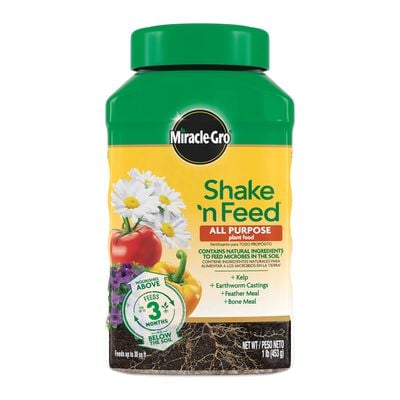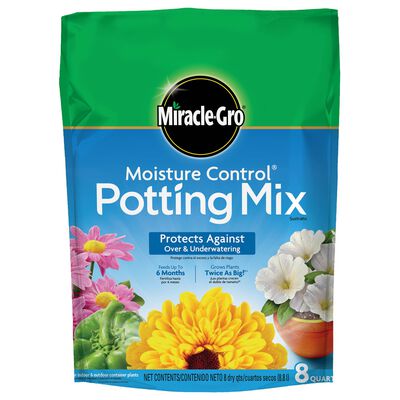
Lasagna Gardening 101
The secret sauce is in the layers.
A lasagna garden won't yield a piping-hot noodle dish (if only!), but it does make use of a layering technique that lets you garden without digging or tilling—and that's pretty saucy in its own right. If you've been intimidated by or had an #epicfail creating a garden in the past, it's time to give this fuss-free approach a try. Discover the magic of lasagna gardening and how you can create a plot in a single afternoon.
What Is a Lasagna Garden?
A lasagna garden sits above the ground. But, instead of filling it with fresh soil like you would a raised bed, you stack compostable materials like newspaper, cardboard, leaves, and grass clippings. Over time, worms and microorganisms decompose the material and turn it into a rich, nutrient-dense soil of its own. (Don't worry, you can plant before then—more on that below.)
Lasagna gardens are perfect for those who enjoy a more carefree look. If you (or your HOA) prefer a neater appearance, you can easily frame it with wood, concrete blocks, or bricks to keep the layers in check. You can also create a lasagna garden in a large container, using the same steps outlined below, if you're short on space or simply curious about this novel technique.
Why Grow a Lasagna Garden?
Lasagna gardens make efficient use of materials that might otherwise end up in a landfill. They're also a wonderful way to grow organically and use less water, since many of the decomposing materials help retain moisture. Plus, they're great for gardeners on a budget.
How to Grow a Lasagna Garden
Building a lasagna garden is fast, easy, and fun. Here are the steps to take to layer one up at your home.
1. Scout Your Spot
Look for a flat spot that receives at least 6 hours of direct sunlight a day. Make sure it's close enough to a water source that a hose can reach, but far enough away from your house that the potential odor from the decomposing materials doesn't make it into your open windows.
2. Gather Your Materials
The ideal lasagna garden uses a mix of 4 parts high-carbon to 1 part high-nitrogen ingredients. If high school chemistry feels like a long time ago, take a deep breath—it sounds more complicated than it is. Here's what you need:
- High-carbon materials. Think of these as your brown layers. You can include peat moss, dried leaves, straw, mulch, and sawdust.
- High-nitrogen materials. These are your green layers. Include materials such as grass clippings, vegetable scraps (or produce that's past its prime), coffee grounds, and even manure from plant-eating animals.
- A base layer. Before you begin stacking up your ingredients, cover the area in newspaper or cardboard. You want a large base layer without any gaps, so make sure to overlap the sheets a bit.
If you're short on materials, swap in a soil designed for raised beds, such as Miracle-Gro® Raised Bed Soil, in place of your carbon layer. At this point, you'll also want to construct a frame if you're not keeping it loosey-goosey.
3. Layer, layer, layer!
Stack your lasagna layers as follows:
- A base layer of wet newspaper and/or cardboard that covers the entire space. This will help smother any existing grass or weeds.
- A high-carbon (brown) layer, keeping your 4:1 ratio in mind.
- A high-nitrogen (green) layer about ¼ as thick as the carbon one.
- Repeat this process until you reach your desired height (18-24" inches tall is ideal).
4. "Cook" your Lasagna…
If you're creating your lasagna garden in the fall or don't intend to plant for several months, you can sit back, relax, and let Mother Nature turn your layers into a rich, nutrient-dense soil. To speed the process, cover it with plastic to trap heat.
5. …or Plant Right Away
Alternatively, you can spread seeds on the top lasagna layer or pull layers apart and insert starter plants, like vigorous young Bonnie Plants®. If you do plant right away, make sure your layers of compost and any manure are fully decomposed so the roots of your plants don't get burned.
6. Keep Your Lasagna Garden in Tip-Top Shape
As the growing season progresses, continue to follow the 4:1 ratio while adding compostable materials to the top to keep a steady supply of new nutrients coming into your plot. Pull weeds as they appear, and water as needed. In future growing seasons, add alternating layers to the top as needed.
Voila! With just a few basic materials and a little bit of time, you've created a rich growing environment for your favorite fruits, veggies, herbs, and flowers. You get to grow what you love in your own backyard while using things that might have been otherwise thrown away. If that's not gardening smarter instead of harder, we don't know what is.


